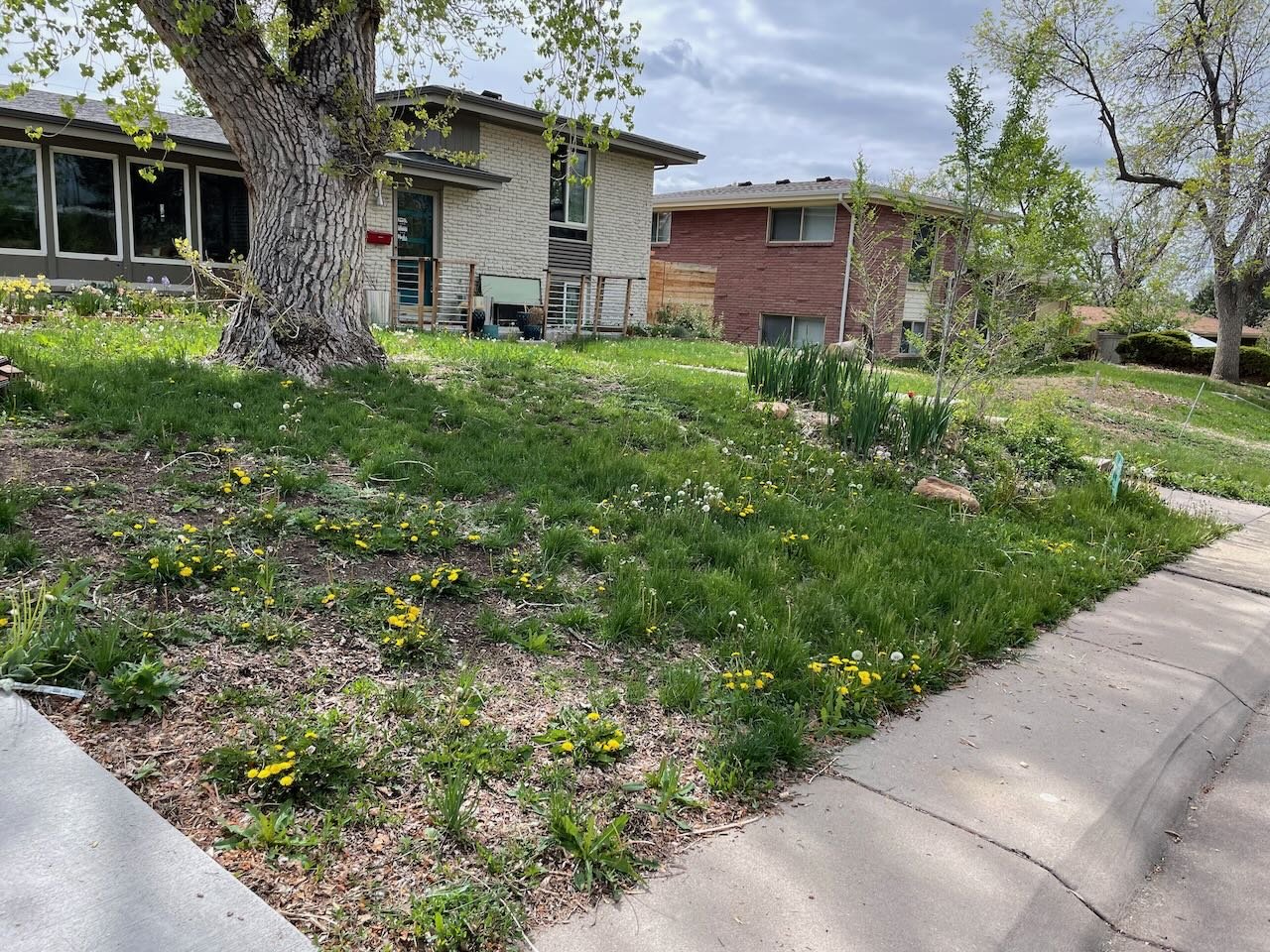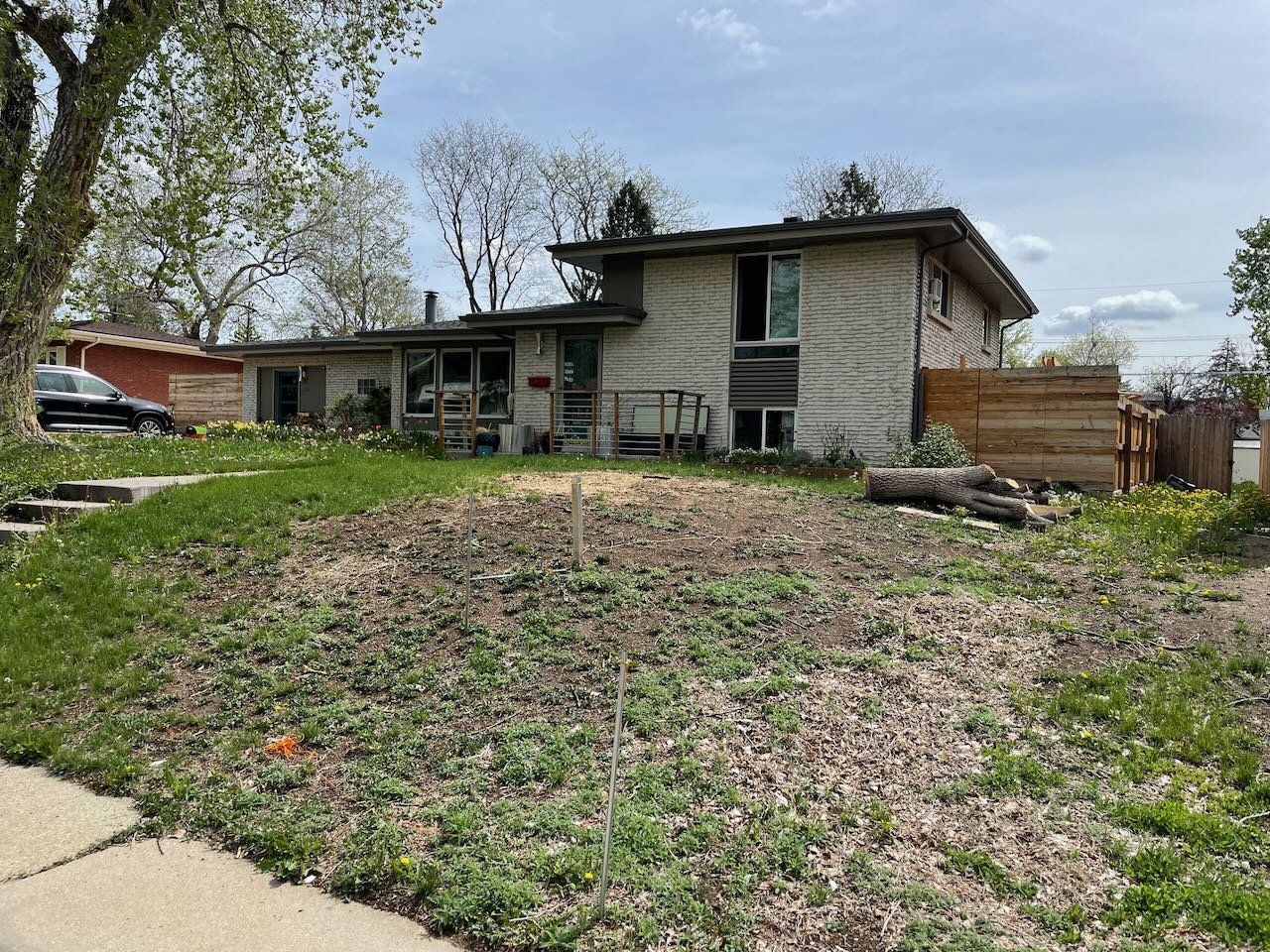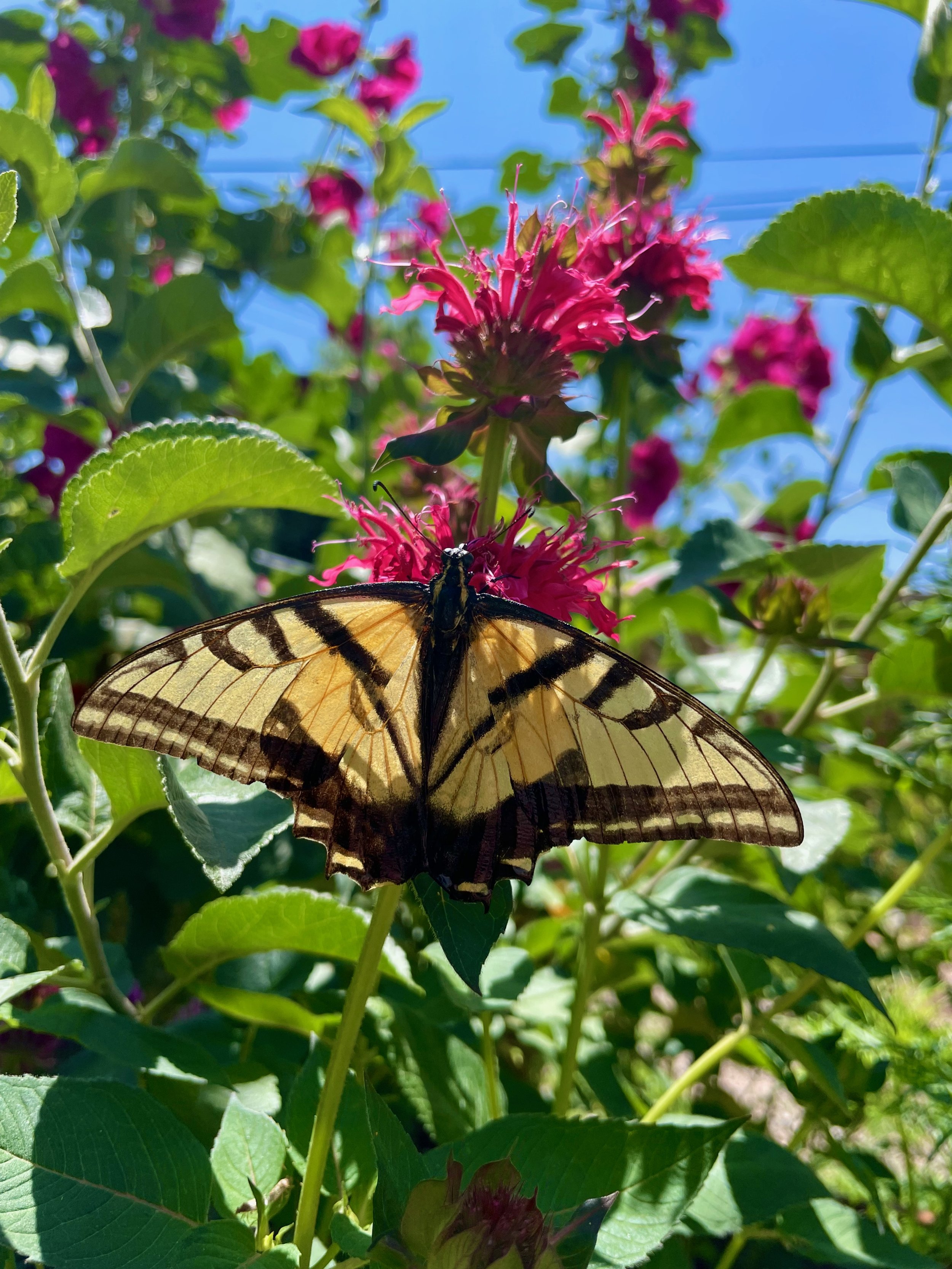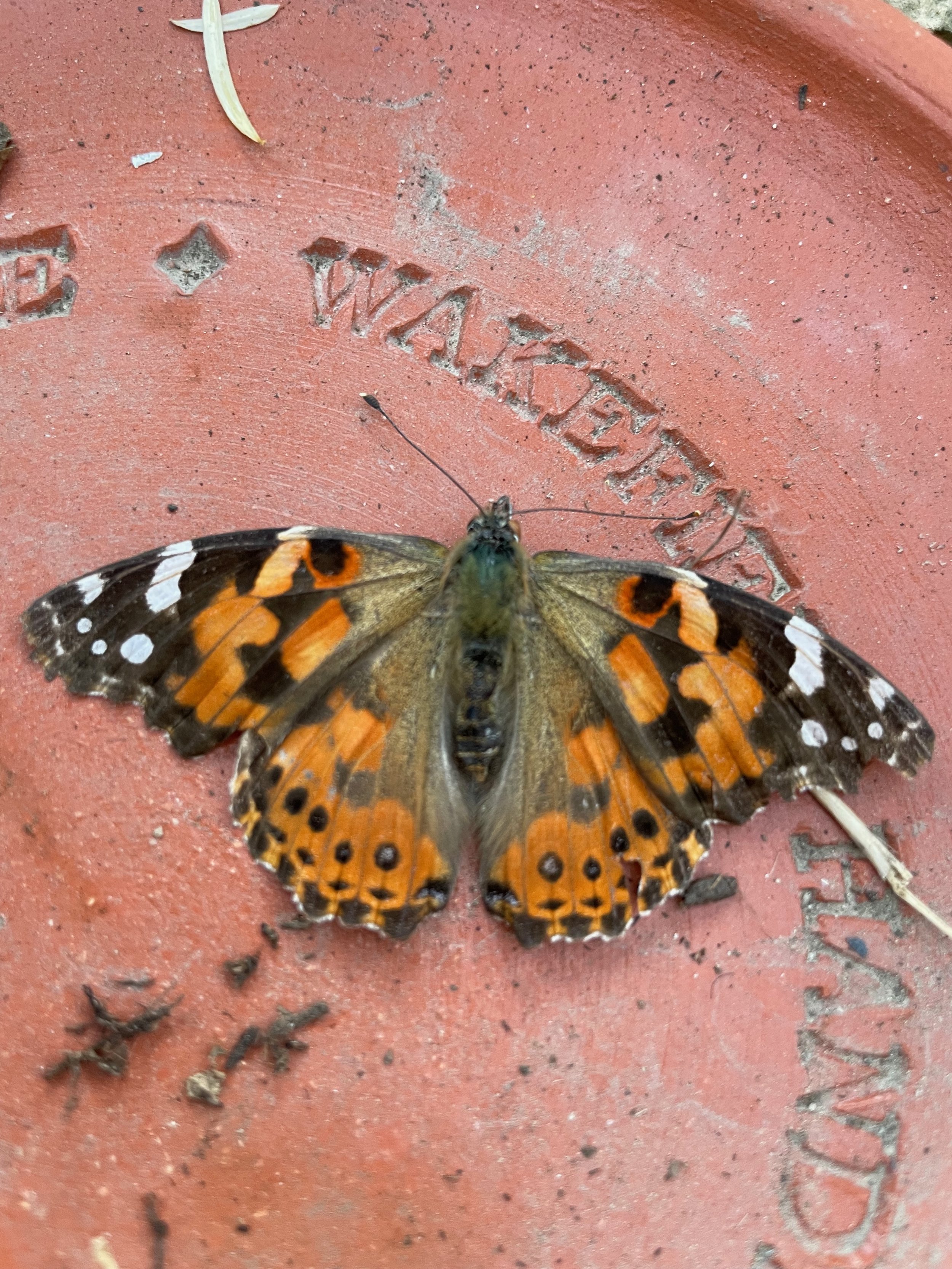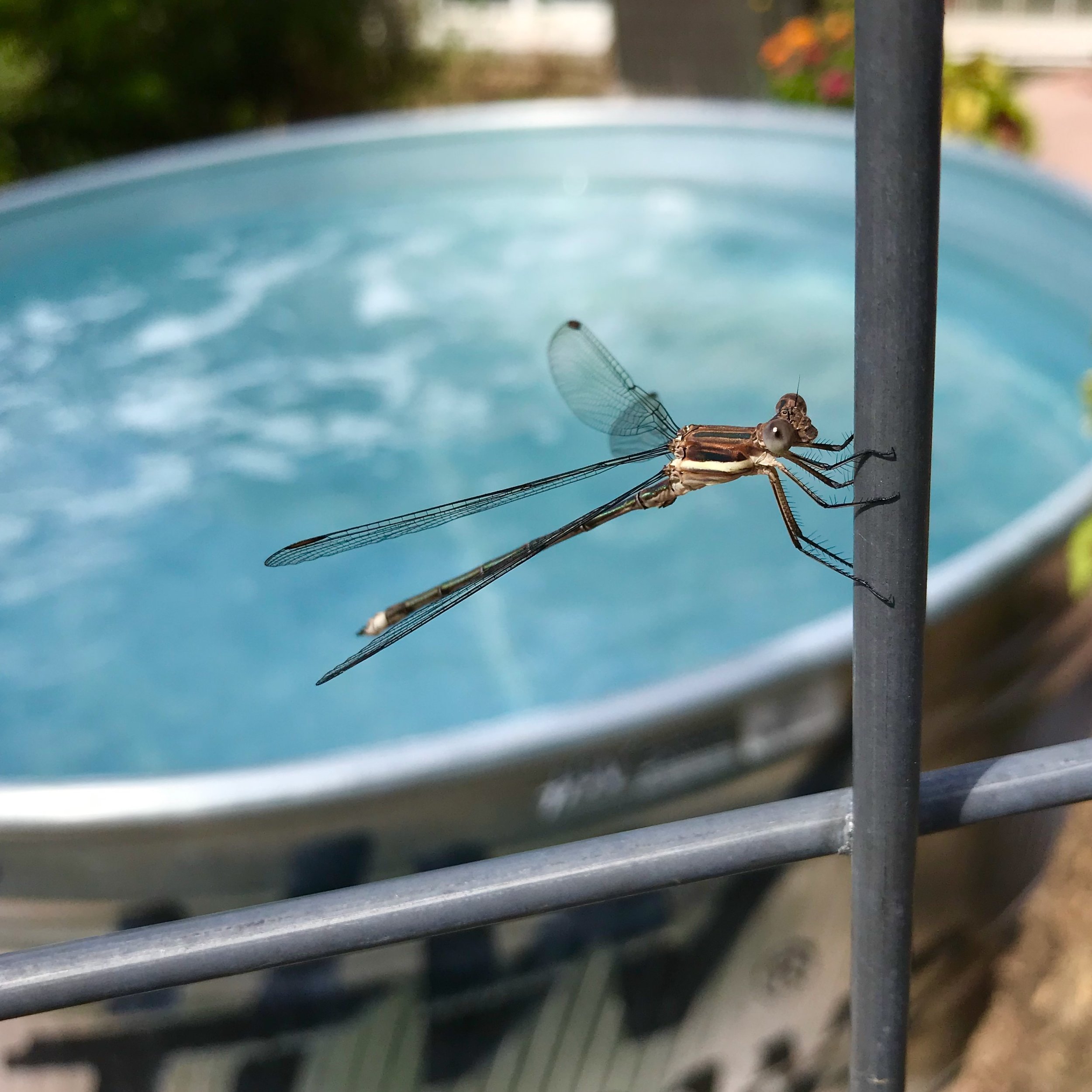Our Wildlife Garden
Why Create a Wildlife Garden?
Spring, 2023: this is the before — a mix of grass and weeds. Mostly weeds.
Spring 2023: you can see the slope of our yard and the lovely assortment of weeds growing over most of the yard.
This spring I embarked on a massive change on our typical suburban yard. I've been dabbling with Wildlife Gardening for a few years, but over the coming years, I am taking a deep dive into an entirely new way of gardening. Actually, that's not entirely true: wildlife gardening isn't new. Its principles are as old as time itself. But North American gardening for so long has focused on precision, pristine beauty, and pest-free yards – precisely the opposite of wildlife gardening. However, with a mass-extinction crisis and climate change, it is time for gardeners and homeowners across the continent to move beyond manicured lawns and garden instead to support wildlife in every form.
But what does that mean? Will it be messy? And what if I don't like bugs?
Yes, I know. But here's the thing: it is possible to have a beautiful garden that supports local wildlife, too. And in the end, it is actually less work for the gardener – leaving us more time to enjoy the fruits of our labors. Seriously. And it's a great time to take up bird-watching, too! I mean, if you don’t like bugs, just think of them as bird food. Not only do birds eat the bugs themselves, but parents rely on bugs — particularly caterpillars — to feed their chicks. And I mean caterpillars by the thousands. So we need to have bugs to have birds — and to have a healthy eco-system.
A Western Tiger Swallowtail sipping nectar from Monarda, commonly known as Bee Balm
Why do we need wildlife gardening?
Our family lives in a very typical North American neighborhood. Ours was built in the late 1950s – neat, modest homes on lots just shy of the average in the US with lawn in both the front and back of the house. Think Leave it to Beaver, and you have it about right. As in Leave it to Beaver, homeowners in this neighborhood surrounded their homes with wide expanses of green turf and planted trees against which they marked the march of time – growing up alongside their children. Saturdays were lawn care days with watering and mowing and fertilizing and trimming. This was American prosperity.
But the sameness of these new developments – replicated and planted right across North America – worked to stamp out entire ecosystems which preceded subdivisions. In our neighborhood, the land had been farmed for less than a century. Before that, our land had been wide open prairie – the homelands of the Tséstho’e (Cheyenne), Očhéthi Šakówiŋ, hinono’eino’ biito’owu’ (Arapaho), and Núu-agha-tʉvʉ-pʉ̱ (Ute) peoples.
Not only did this capture and repurposing of land have a devastating effect on the people who lived here before us, but it also reshaped the land, the environmental systems, and the biodiversity of our continent and our planet. Building sprawling neighborhoods of sameness has had a tremendous impact on my ecosystem – and the ecosystems across North America – in a very short time. And we are only starting to understand those potentially catastrophic impacts.
A Painted Lady butterfly resting on a saucer in my greenhouse
But what does development have to do with wildlife?
Well, let's take my neighborhood for example. Once prairie, these lands were farmed from about 1875 to the early 1950s. The landowner created irrigation ditches and small reservoirs to cope with our hot, dry summers here in Colorado. Transforming prairie into farmland inherently changes the ecosystem and removed a tremendously effective carbon sink. Then paving that farmland, building homes, and installing green lawns changed it again. Our native birds and mammals lost their homes and habitats. Those who could, adapted. But many could not.
This loss of habitat – wetlands, prairies, grasslands, forests – has resulted in a dramatic decline in many species. Scientists refer to this as a biodiversity crisis. In other words, as fewer and fewer species live in a particular place, that loss of diversity (the number of species) causes a greater loss of species – a cascade which has become difficult to stop. Without native plants, native insects can't lay their eggs and caterpillars can't hatch. Without those caterpillars, native birds can't feed their babies. Without baby birds that grow into adults, mammals and other bird species can't survive – and soon the entire system collapses.
And it is happening right now. But we can do something about it.
A Katydid on my son’s hand in the garden
What can we do about the biodiversity crisis and climate change?
I often feel pretty hopeless about the state of the world, frankly. But here's the thing: while we may not have individual power and license to single-handedly get good healthcare to every American, for example, we CAN single-handedly (or perhaps with some help), change how we care for the land we live on. And doing so can change EVERYTHING.
And here's the thing: as we join together with other gardeners, transforming yard after yard, lawn after lawn, balconies, fields, raised beds, and borders, we create a bigger, healthier, more sustainable ecosystem across the country.
One yard makes a difference! And many yards together make a BIG difference.
I’m unsure what type of caterpillar this is, but he was fun to watch.
What is one step we can take right now?
The biggest step we can take as gardeners is to shift our thinking about plants toward using native species anywhere we can. This is a huge mental shift, honestly. For generations gardening in North America has been focused on green lawns and exotic plants. But green lawns and exotic plants don't support native insect life. They also use more water (usually). And getting that manicured look often requires the use of pesticides, herbicides, and fertilizers.
However, wildlife gardening takes a big step back. Native plants are already adapted to our growing conditions. So growing natives – even in a container garden on a patio – has a positive impact on your local ecosystem in a way that exotic plants simply can't.
A Great Spreadwing (Archilestes grandis) damselfly near our Stock Tank Pool
What are our goals for the Wildlife Garden and beyond?
We have four big goals for this project:
1. Utilize 85% native species at a minimum.
2. Provide shelter and water for our local ecosystem.
3. Manage and capture the watershed on our property.
4. Enhance the beauty of our property in an inspirational and aspirational way.
I'll be sharing all of the how and why for these goals as we go, but these are the founding principles around which the entire project hinges. And I am so excited to tuck in and get moving!
So join me and follow along as we make some big changes in our yard to support the local birds, bees, butterflies, and so much more! This is a long-range process – three years or more. But the results will be tremendous, and I'm so excited to share them with you. Along the way I will also share resources, successes and failures (because of course there will be some), and lots of photographs, too!
Be sure to sign up for my monthly newsletter and follow me on Instagram as well. And if you decide to join this movement, let me know. I would love to follow your wildlife gardening adventure, too.


